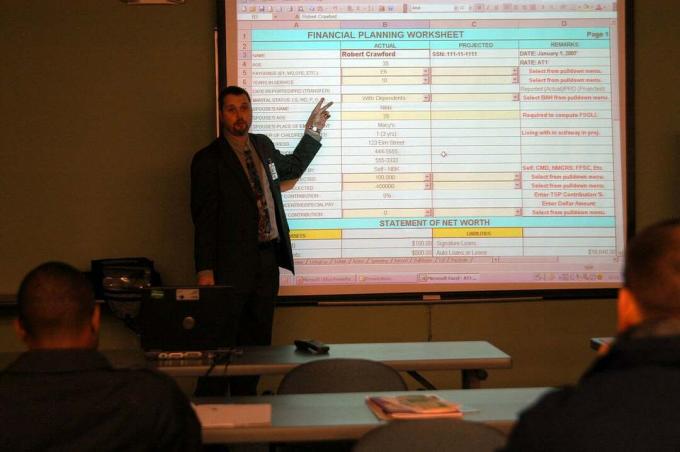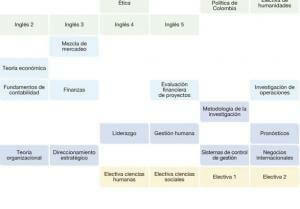planning is the coordination of plan to achieve a specific goal, however, is not an isolated and eventual process, but rather a permanent and continuous process that must be present in any organizational entity.

Advertisements
Well developed planning and implementation allows you to efficiently and effectively achieve pre-established goals and objectives, which allows optimizing resources, reducing risk and taking advantage of the process, for the benefit of the entity.
this one management process that integrates different elements, such as: defined objectives, action plans and the allocation of resources; however, it may have a different management process depending on the type of situation; therefore, different types of planning can be differentiated.
Advertisements
But, regardless of the type of planning to be implemented, all they have certain characteristics that define the process.
Therefore, in this post, we will explain what these are essential characteristics that any planning process must have.
Advertisements
In this article you will find:
Essential features of planning
Planning is a methodical process that can be used for different situations, that have certain essential characteristics that define said management process, such as:
It is a continuous and permanent process
This is one of its most distinctive characteristics, since it represents a set of actions that are executed continuously and that does not end with the completion of certain activities and goals.
Advertisements
Instead, the process is constantly readjusted, which lead to the achievement of new activities, processes and purposes through which a positive effect on aspects of a reality, this continuous process is planned based on the objectives of the entity.
It is a systematic process
The planning process must take into account the systems and subsystems that make up the management, covering all areas of the organization; being a process that must take into account each of the elements that interact with each other as a whole.
Advertisements
It is a systematic process that allows developing strategies based on the existing reality, taking into account all the interacting factorsboth internal and external to achieve the objectives and expected results.
Identify and allocate resources
An essential part of planning is to identify and allocate resources, whether monetary, material, human, as well as time, allocated depending on each activity of the process, which are studied and provided in advance.
Providing or estimating resources is an essential part of planning so that the entire process works according to plan. making efficient use of resources and avoiding unnecessary spending.
It is done in a unified way
Although the planning process establishes or assigns specific activities for each operational process, each of the plans must work in parallel like a gear leading to an overall plan.
Basically, although each part of the process has its own objectives, it must work in a unified way with all the areas, otherwise the general approach of planning for the achievement of the objectives of the organization may be lost. entity.
establishes interdependencies
In some processes there interdependent activities that need to be executed together, in which the execution of the other depends on the continuity of one activity.
In these cases, the process of planning these activities must be very well coordinated to avoid delays in the continuity of the project and the loss of time.
It is implemented in all areas of the organization
Regardless of the level of hierarchy within an organization, every process in each area or department requires planning, since this It is not only limited to the executive level, but penetrates the entire organizational structure.
Each activity, as simple as it is lazy, must be planned, since each one plays a role within the organization, if it does not generate productive contributions to the entity, resources would be wasted unnecessarily, which makes of the planning a useful tool in all areas of the organization.
It is based on reasonable perspectives
Planning processes are based on an objective and reasonable point of view, taking into account all possible options to establish an optimal and efficient action plan.
Planning, more than a methodical process to coordinate activities and resources, is a process that involves reasonable study and analysis of viable options for the execution of an action plan oriented to the objectives of the entity.
It is always future oriented
Any planning is carried out with an execution approach towards the future, since planning is a previous process that is done before carrying out an action plan, otherwise you will only be improvising.
This management process can be oriented to the short, medium or long term, depending on the situation or project to be planned.
decrease uncertainty
like planning take into account all possible factors present, both internal and external, in addition to possible future contingencies, uncertainty is significantly reduced, since they provide all possible scenarios allowing feasible decisions to be made.
Formulated precisely and clearly
Each planned action must be coordinated and expressed as clearly and precisely as possible; thus, each team member must understand the entire process previously planned, as well as his role within the process to avoid any improvisation or error due to lack of clarity.
It is an efficient process
Planning is developed on the basis of efficiency, its purpose is to develop action tactics that optimally improves the performance of the organization, making use of the minimum amount of resources, studying and proposing viable alternatives.
Well, through planning, the most appropriate action strategies are suggested, in view of the study and analysis of the real situation of an organization or project.
set strategies
Planning implies establishing strategic action plans making efficient use of the entity's resources and opportunities to counteract risks and obtain the maximum benefit.
However, the strategies must be studied and planned correctly before implementation to get the expected results.


